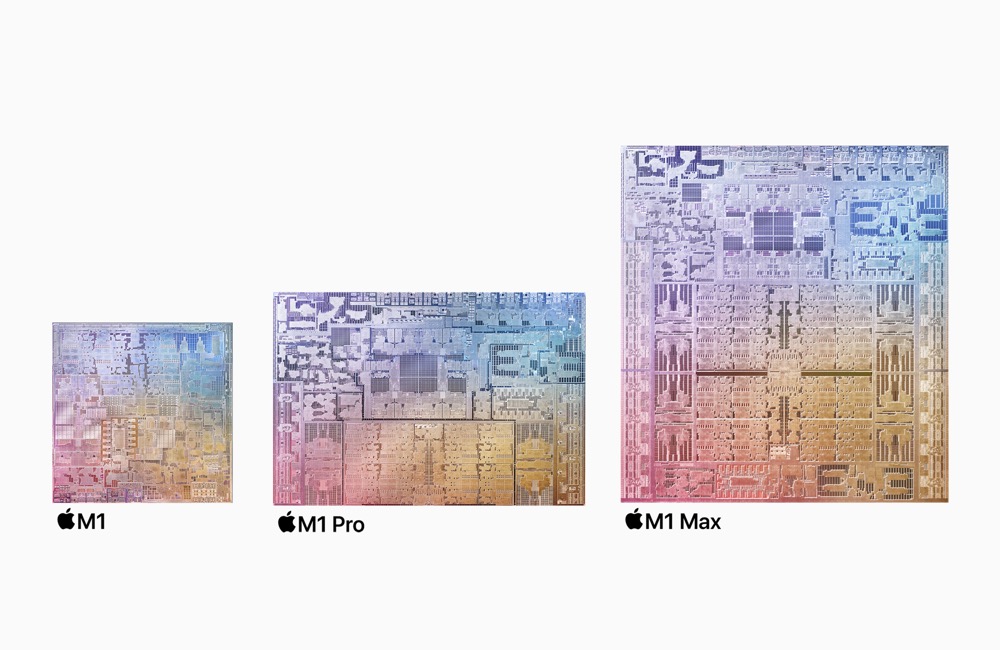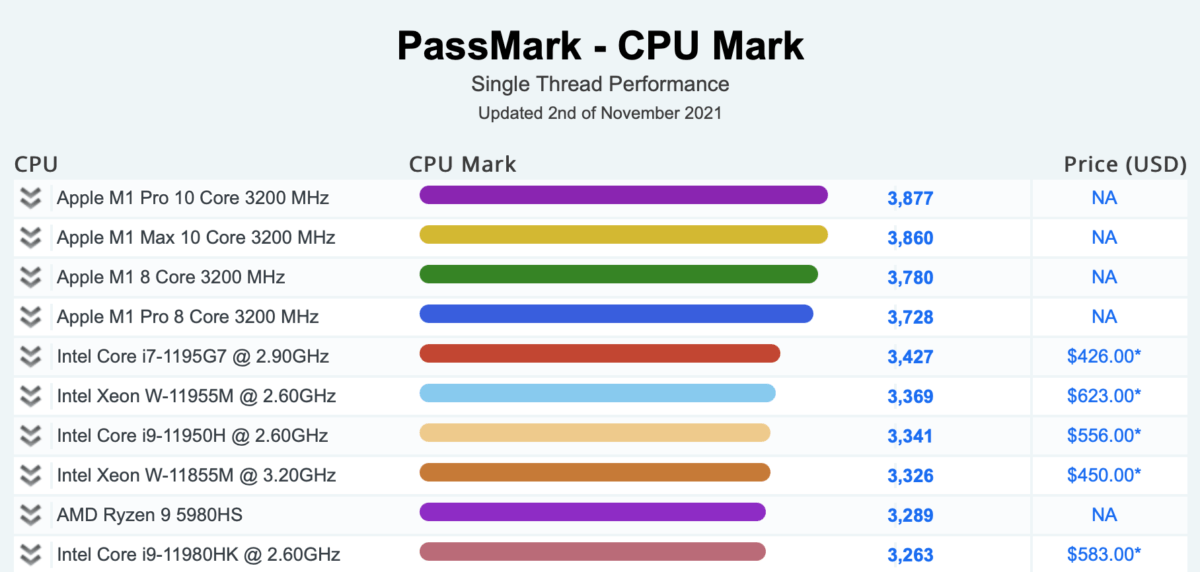The first M1 Max/Pro benchmarks prove Apple has built a beast

These chips are to scale to each other.
The first M1 Max GPU benchmarks are beginning to appear, and these suggest the GPU is three times faster than the M1 chip – which was itself faster than the Intel chips it superseded, with the whole venture planned many years ago, Apple execs have claimed.
Let’s look at the latest data
Geekbench claims the M1 Mac offers up to 3x faster GPU compared to the original M1. In part this is because of the 32-core GPU, which delivers four times as many GPU cores as found on the M1.
- M1 Max GPU score: 68,870.
- M1 chip in 13” MacBook Pro: 20,581.
- The M1X Max reportedly outperforms the previous Intel chip found in the 16-inch MacBook Pro by 62 percent.
As you can read here and here, Apple made several claims during the product introduction, but in the small print we find several more.
- The M1 Pro and M1 Max deliver 1.7 times more performance than the latest 8-core Intel Core i7-11800H laptop chip in the same power envelope.
- It matches the highest performance of that chip at 70% less power.
- That was in tests against the high-end MSI GP66 Leopard (11UG-018)
- Apple’s new processors also beat the NVIDIA GeForce RTX 3050Ti as deployed in the test PC, a Lenovo Legion 5 (82JW0012US) – and is also comparable to the NVIDIA GeForce RTX 3080.
- The M1 Max Macbook Pro also performs better than the Razer Blade 15 Advanced Model.
Update 11/2/21
Passmark is out the gate (November 2) with its own data, which shows Apple’s M-series chips in the top four positions in terms of single-core tests.
While that position may be short-lived, given Intel’s imminent i9-12900K and i5-12600K processors which may even things out a little, we know Apple has it’s own next iteration chips waiting in the wings as it makes an iMac Pro detour toward the presumed power Mac glory of the Mac Pro. Interesting times, right?

Passmark speed tests
Every transistor matters
It shouldn’t be a huge surprised the Apple chips deliver such performance. While the A15 chip weighs in with 107.68mm2 the M1 comes in at 120mm², while you see 245.9mm² for the M1 Pro, and 432.35mm² for the M1 Max. (All estimates but from reliable sources).
While all these chips are built using TSMC’s 5-nanometer process (which is also a first for PCs), the larger chips carry more transistors, which basically translate into better performance.
What that means is that whle you get 15.8 billion transistors in the A15, the Mac variants offer up to 57 billion transistors (M1 Max).
Apple at the cores
Apple has also tweaked what the cores do, so the Mac chips have been developed to deliver better performance. What this means is that you now carry more transistors in an M1 Max than you’ll find in all the Macs Apple sold in 1984, and 57x the raw transistor power Pixar used to make Toy Story.
https://twitter.com/benedictevans/status/1450150717944180738?s=20
This is why early tests suggest the M1 Max MacBook Pros are as fast as a $6,000+ Mac Pro with a 12-core Intel Xeon, but use a lot less energy.
We look forward to additional results. Meanwhile it seems time to consider what this means for the next big Apple introduction, the Mac Pro.
Please follow me on Twitter, or join me in the AppleHolic’s bar & grill and Apple Discussions groups on MeWe.




